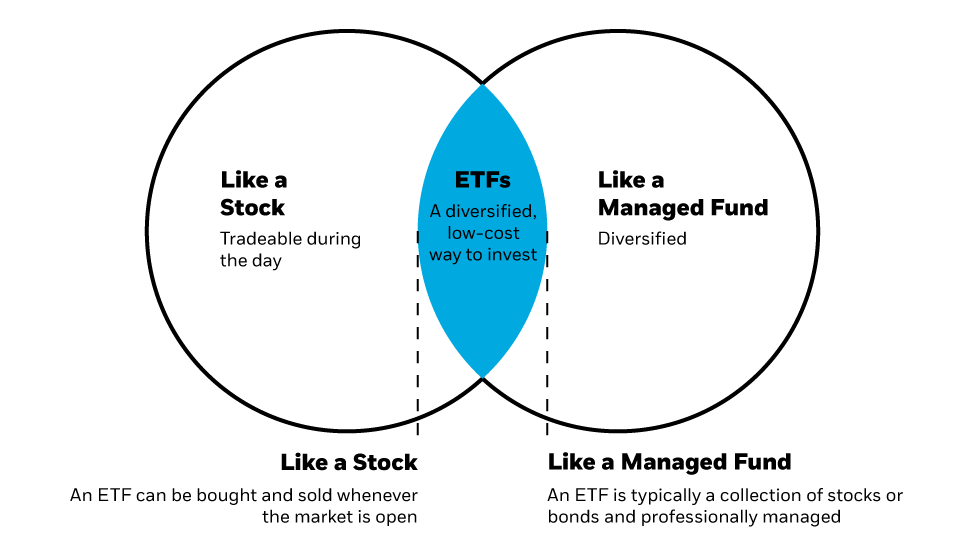Unlock the Versatility and Leverage of Exchange-Traded Funds
The frantic dance of stock prices can be a perplexing symphony for investors seeking stable returns. Amidst the market’s capriciousness, exchange-traded funds (ETFs) have emerged as a beacon of liquidity and diversification. For options traders, ETFs present an unparalleled opportunity to amplify profits, manage risk, and navigate the dynamic financial landscape with greater precision. In this comprehensive guide, we will delve into the world of ETFs for options trading, unearthing the complexities and unraveling the benefits, to empower traders with the knowledge to harness this powerful instrument for success.
Image: wealthdesk.in
Understanding ETFs and their Role in Options Trading
An ETF (Exchange-Traded Fund) is a hybrid financial instrument that combines the diversification of a mutual fund with the liquidity of a stock. It’s a basket of securities, such as stocks, bonds, or commodities, that tracks a specific market index or sector. Unlike traditional mutual funds, which are traded once daily, ETFs are traded throughout the day, just like regular stocks.
For options traders, ETFs offer several advantages. Firstly, they provide instant diversification, allowing traders to spread their risk across a basket of securities rather than relying on the performance of a single asset. Secondly, ETFs boast high liquidity, meaning they can be bought or sold quickly and easily, facilitating swift adjustments to trading strategies. Thirdly, ETFs offer access to various asset classes and market segments, enabling traders to capitalize on broader market trends.
Types of ETFs for Options Trading
The ETF universe comprises a vast array of options, spanning different asset classes and investment objectives. Some of the most popular ETFs for options trading include:
• Index ETFs: These track the performance of a specific market index, such as the S&P 500 or the NASDAQ 100.
• Sector ETFs: These focus on a particular industry or sector, such as technology, healthcare, or energy.
• Commodity ETFs: These provide exposure to physical commodities, such as gold, silver, or oil.
• Inverse ETFs: These ETFs move inversely to the underlying index or asset, providing traders with a way to profit from market downturns.
• Leveraged ETFs: These ETFs employ leverage to amplify returns, though it comes with increased risk.
Advantages of Using ETFs for Options Trading
• Diversification: ETFs spread risk across multiple underlying assets, minimizing exposure to individual company-specific factors.
• Liquidity: ETFs trade like stocks, providing instant liquidity for quick execution of options strategies.
• Cost-effectiveness: ETFs typically have lower expense ratios than actively managed mutual funds, reducing trading costs.
• Accessibility: ETFs are widely available through most brokerages, making them easy to include in trading portfolios.

Image: www.tradersdna.com
Risks Associated with ETFs for Options Trading
• Tracking Error: ETF performance may deviate from the underlying index or asset it tracks, leading to potential discrepancies in returns.
• Liquidity Risk: While ETFs are generally liquid, certain ETFs may experience lower trading volume, resulting in difficulty executing trades at desired prices.
• Counterparty Risk: ETFs are subject to counterparty risk, which arises from the potential failure of the ETF’s issuer or its underlying asset providers.
Etfs For Options Trading

Image: www.blackrock.com
Conclusion
ETFs have revolutionized options trading, providing traders with a versatile and cost-effective tool to enhance their strategies. By harnessing the diversification, liquidity, and access to various asset classes offered by ETFs, traders can navigate market volatility and pursue profit opportunities with greater confidence. As with any investment, it’s paramount to conduct thorough research, understand the associated risks, and align your trading strategies with your financial objectives. When wielded judiciously, ETFs can elevate your options trading prowess, unlocking a new realm of possibilities in the dynamic financial landscape.






